1st Battalion Worcestershire Regiment - Battle for Tripsrath 1944-45
By early November 1944 the American forces had taken Aachen and were about to launch their advance towards Cologne. However, before this action could get underway the left flank 9th U.S. Army needed to be secured and this task fell to XXX Corps, which included 43rd Wessex Division, now with the 8th Armoured Brigade under command. This planned action was given the codeword 'Operation Clipper'.
'D' Day for 'Operation Clipper' was set for Saturday, 18th November 1944 and Major-General Ivor Thomas, commanding 43rd Wessex Division, had already decided that for this attack he would use the whole of 214 Brigade plus one battalion from 130 Brigade, namely the 5th Battalion Dorset Regiment, under command of 214 Brigade. Meanwhile, 129 Brigade was given the job of holding the start line, which included the village of Gillrath, and the remaining two battalions of 130 Brigade were held in reserve.
214 Brigade was given the job of cutting off all exits from Geilenkirchen, a small German town on the River Wurm only about 4 miles from the Dutch frontier, and on the high ground to the east ran the Siegfried Line. The town of Geilenkirchen itself was an American objective and fell to the 84th U.S. Infantry Division supported by the tanks of the Sherwood Rangers Yeomanry. For this action this American Division came under the command of XXX Corps.
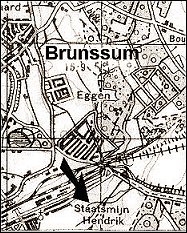
Worcesters move to Brunssumthe 1st Battalion Worcestershire Regiment left its position at the village of Malden (Dekkerswald), just a few kilometres south of Nijmegen, early on the morning of Friday 10th November 1944, and headed south with the other Battalions of 214 Brigade. The Worcesters finally arrived at the small village of Puth , 2km east of Geleen, very late that same evening. On the 13th the Battalion marched to the mining town of Brunssum, about 7 km to the east where 43rd Division headquarters had already been established. On the 16th November just before noon the sky above Gielenkirchen was filled with a large number of heavy bombers. In a joint operation, R.A.F. Bomber Command and the US 8th Air Force bombed the German ground forces. The same evening at 18.00 hours the machine guns of the 8th Middlesex Battalion opened up on the villages of Tripsrath, Neiderheide and Bauchem, an operation named “Pepper Pot”, intended to soften up the enemy before the main attack went in. |
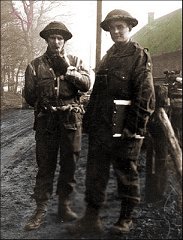
Worcesters prepare for attackEarly on the morning of the 18th November 1944, the Companies of the Worcestershire Regiment emerged from the protection of their concrete air-raid shelters in Brunssum having prepared themselves for battle. They moved forward to a postion east of Neiderbusch, slightly south of Gillrath, and dispersed amongst the trees, where to their surprise of the men, ‘A’ Echelon was already there waiting for them with the first hot meal of the day. The sound of our Artillery could be heard pounding the German postions in preparation for the attack. |
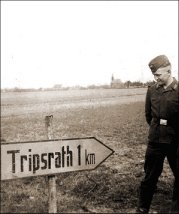
Attack on Rischden and TripsrathAt 14.00 hours Lieut.-Colonel Osborne Smith gave the order to move out and begin the attack on Rischden and Tripsrath with the Companies moving towards Rischden. As the Worcestshire H.Q. Company moved forward through a small area of woods towards their forward HQ position at Rischden they were suddenly caught by intensive enemy shelling and Lieut.-Col. Osborne-Smith was hit in the leg and had to be evacuated. The Worcesters objectives at Tripsrath was still some some distance away. Major John Ricketts, now acting Battalion Commander, decided to proceed with the original plan despite the absence of tank support. By this time ‘A’ and ‘D’ Companies had spent a most unpleasant three hours on the Forming-Up-Point, during which time the enemy had continually shelled them. ‘A’ and ‘D’ Companies were now called up, to advance on Tripsrath to finish the job off. |
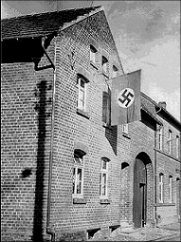
Worcesters Fighting in TripsrathOn the 19th November 1944, dawn broke with grey skies and heavy rain. The battlefield, which had always been bad, now became a quagmire, a sea of liquid brown mud in which no wheeled vehicle could move effectively. Therefore, all replenishment had to be carried out to the forward Companies by Honeys and Weasels. Some Sherman tanks, which had extended end connectors fitted to their tracks, were able to get forward and give some support. Due to these difficulties the forward Companies found themselves without food and without anti-tank guns at first light that morning. Four Sherman tanks managed to get through and rumbled into the village at 05.00 hours that morning. All seemed to be going well until they reached the outskirts of Tripsrath. Three tanks were immediately knocked-out by SP guns and a fourth tank was Bazookaed by German using a Panzerfaust. A fifth tank survived this attack and remained in action the rest of the day. This action resulted in two tank officers and two troopers being killed with a further two officers and ten other ranks being wounded. |
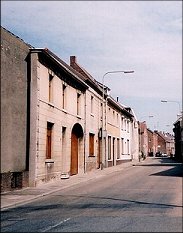
Worcesters move to rest areaIn the early hours of the 23rd November the Worcesters were relieved by the 5th Wiltshires, and left the battle area and headed for a well earned rest just over the border in Holland. The Worcesters were eventually received in the small hours of the 24th November by the people of Schinveld, a small village in Holland very close to the German frontier and about two miles north of Brunssum. It absorbed the Battalion with a hearty welcome despite their mud-plastered, unwashed and unshaven condition. he Battalion spent 24th, 25th and 26th in Schinveld resting and enjoying the company of the local Dutch folk who went out of their way to make them feel welcome. Regular transport was also arranged to convey the troops to and from the coalmines at Brunssum where they could enjoy the delights of hot baths. |
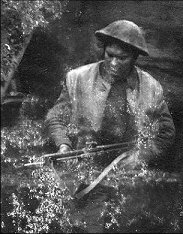
Worcesters in Dorset WoodOn the 27th Novemver the Worcesters received orders to relieve the 4th Dorsets in an area of woods west of Tripsrath. At 14.30 hours they moved from Schinveld via the Gangelt-Geilenkirchen road to Bauchem in troop carrying vehicles. There they debussed at about 19.30 hours and set off once more up the Heinsberg road towards Tripsrath. At Rischden they advanced quickly north-west across open country some 300 yards into the cover of woods which the Dorsets were still holding. Dorsets met the Worcesters at appointed rendezvous and each Company was led to their respective positions. When the handover was completed, the Dorsets moved out. The following morning, daylight revealed the full evidence of the hard battle fought, unburied corpses of the enemy testified to this fact. Over the next 2 days the Worcesters suffered spasmodic enemy shelling, before being relieved by the 5th D.C.L.I. on the 30th. The Worcesters then moved to Gillrath and finally to the village of Niederbusch and rested for the next 3 days. |
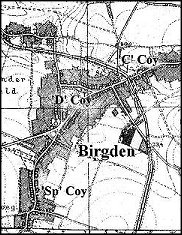
Worcesters move to BirgdenAt 18.00 hours on the 3rd December, a very dark and stormy night, the Worcesters relieved the 12th K.R.R.C, in the village of Birgden and the surrounding area. |
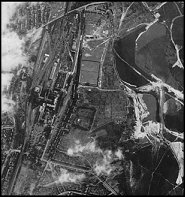
Worcesters in Brunssum second timeOn the 6th December 1944 the Worcesters were relieved by 4th Wiltshires and, crept back down the village streets. The Worcesters eventually arrived once more at Brunssum at 23.30 hours and debussed at the air-raid shelters of the Prins Hendrik coalmine. |
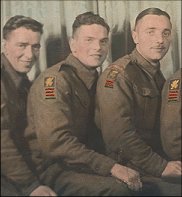
Christmas at BilzenOn the 20th December the Worcesters moved to the Belgium town of Bilzen just 15 Km from Maastricht and the Dutch/German border. The Worcesters were billeted with the local Belgium folk and Battalion H.Q. was established in the local school. Some of the men were billeted with the Monks in the local Abbey. The whole Battalion was on one hour’s notice to move in the event of any further enemy advance by the Germans in the Ardennes. On Christmas Day the Battalion enjoyed a very welcomed Christmas dinner due mainly to the Quartermaster and his staff who had managed to produce an abundance of tinned turkey, pork, vegetables, Christmas pudding and English beer, not to mention such trimmings as mince pies, fruit, nuts, chocolate, cake, cigars (captured stock intended for the Wehrmacht) and some dubious red wine ‘Chateau Naafi’!! |
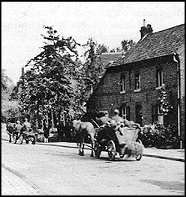
Defensive positions at BundeOn the 27th December the Worcesters moved again this time to the small village of Bunde, about five miles north-east of Maastricht and roughly half-way back again towards Brunssum. The Battalion still retaining its counter-attack role on the Meuse. In addition to this they spent the last few days of 1944 and the first ten days of 1945 preparing defensive positions in the Brunssum vicinity against the possibility of an enemy thrust at Geilenkirchen for, although the Ardennes Salient was now under control, the threat still remained. |
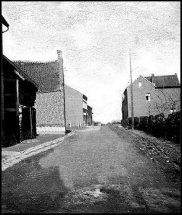
Tripsrath for the second timeTripsrath area had changed considerably since the Worcesters left it in the previous November. There were now two Companies in the village, two Companies in Hoven Wood, and Battalion H.Q. and “Sp” Company in Hochheid. A thick blanket of deep snow now covered the countryside and the roads and tracks were packed hard forming a treacherous icy surface. |
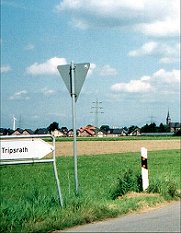
Now and thenA selection of photos showing how the area has changed over the years since 1944/45. |
